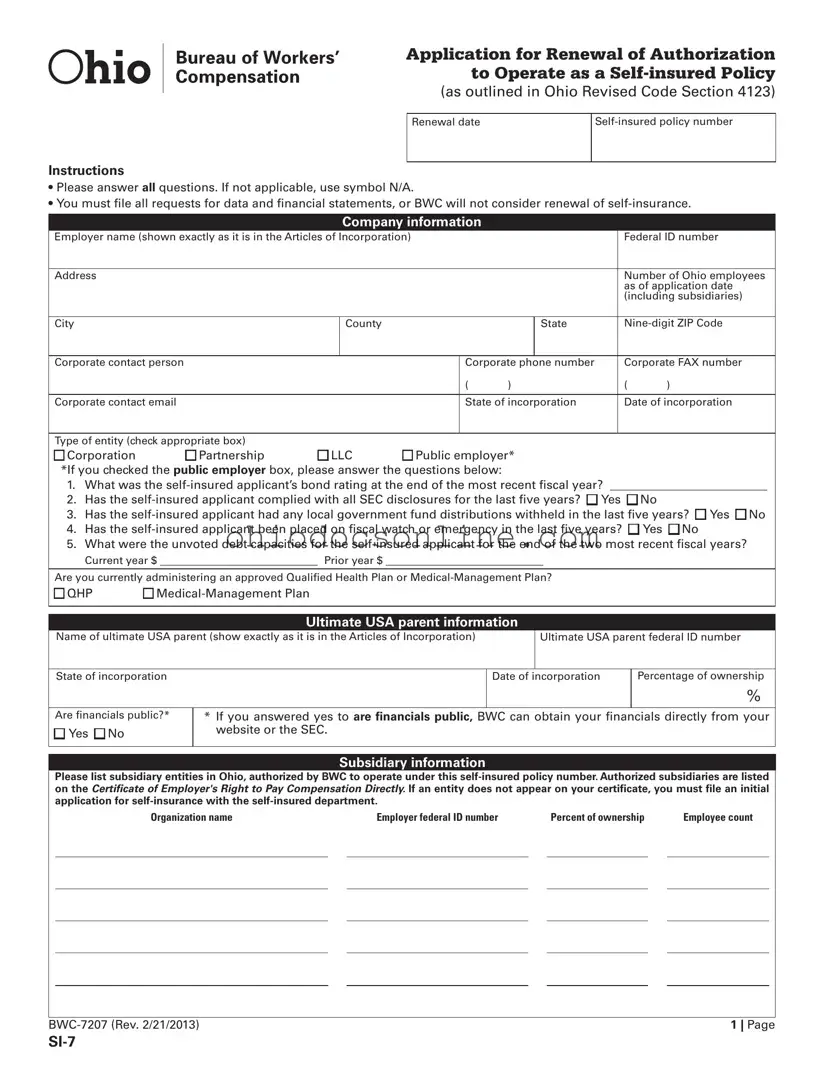Ohio Si 7 Template in PDF
The Ohio Si 7 form serves as the Application for Renewal of Authorization to Operate as a Self-insured Policy, as mandated by Ohio Revised Code Section 4123. This form is essential for employers seeking to maintain their self-insured status and requires comprehensive information about the company, including financial details and employee counts. Accurate completion of the form is critical, as failure to provide necessary data may result in the denial of the renewal request.
Open Editor
